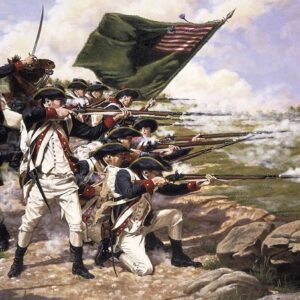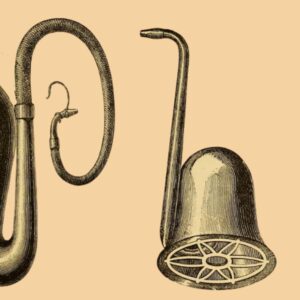
Afrodisiac: A Textual Meditation on Greg Tate
Michael A. Gonzales Remembers His Dear Friend and Mentor
In 1982, my introduction to the music writing of future mentor and friend Greg Tate was a black magic moment that caused me to celebrate as his words literally changed my young life. Not that there weren’t a few Black music journalists/critics before him (LeRoi Jones, Phyl Garland) whose work I admired, but that morning I bought the Village Voice, opened to the record review section and read a piece on George Clinton (“Beyond the Zone of the Zero Funkativity”), that sent me soaring. It was a critique that was so eye-opening, funky fresh and inspiring, I felt like a kid who just watched a rocket blast towards the moon and decided he wanted to be an astronaut.
Though I’d long wanted to be a writer, I’d always assumed that novels and short stories would be my specialty, but Greg Tate’s work offered a different path. From that day on I searched for Tate’s byline every Wednesday morning to see what the brother had to say, what jewels he was going to drop, what wisdom he was going to pass on. Though Tate wrote primarily about music, his range of cultural interests was expansive as he also explored art, films, books, paintings and other artistic avenues being paved by various creatives of color.
Thankfully, the Village Voice editors didn’t try to rein him in or chain him to one genre. Tate dissected mostly what he loved about pop culture, be it electric Miles, the films of Julie Dash or the comedy of Richard Pryor, and presented it to the world in a language that was playful and profound. Though he celebrated Blackness, his tastes weren’t limited by the colorline. It was through Tate’s literary reviews or name droppings that I discovered the writing of William Gibson (Neuromancer), Thomas Pynchon, and Don DeLillo. Many of those early essays were collected in the essential 1992 collection Fly Boy in the Buttermilk.
 On Run-DMC, Village Voice, 1985.
On Run-DMC, Village Voice, 1985.
As I wrote in my 50th birthday tribute to him in 2007 (“A Love From Outer Space: Why Greg Tate Matters”), his work sent me down many rabbit holes. “It wasn’t long before I was buying old James Brown and Funkadelic albums at the Music Factory in Times Square (where cranky, cigar smoking Stanley Platzer reigned supreme), reading dusty paperbacks by Samuel R. Delany and Ishmael Reed, tripping through the post-structuralism weirdness of Jean Baudrillard and Jacques Derrida and having my mind blown by Clement Greenberg as well as a mothership of other musical and literary folks.”
*
Back in the 1980s, the Lower East Side was where a lot of Black nerds, weirdos, and freaks socialized, shopped, ate, worked and sometimes lived. Many of us dwelled in Harlem or Brooklyn, but various spots on Astor Place and St. Marks Place (Dojos, Yafa Café, St. Marks Comics, St. Marks Books, various sushi joints and bars) became our artistic refuges. My friend Andrea (Sister From Another Planet) Rose Clarke recently told me that she’d first met Tate on the steps of Sounds Records (new and used), which is where I first met Greg’s good friend Vernon Reid.
Back then, the guitarist/leader of Living Colour was just another unsigned rocker with dreads while I sported an Afro Mohawk. After we started talking about music, I told him I aspired to write record reviews. He invited me to a Black Rock Coalition (B.R.C.) meeting. “Me and my friend Greg Tate are two of the founders,” he told me. “I think you two should meet.”
A week or so later I was gathered with a roomful of Black bohemians in the lounge of the old Village Voice building on lower Broadway. It was at that first meeting where I met many future friends, including musician Melvin Gibbs, poet Tracie Morris, and novelist Darius James. Recently I reminded Darius how we’d met. “Man, Tate sure did bring a lot of us together.” No doubt, I thought, as my mind drifted back decades when I was in the East Village every few days.
“Yo,” he said, “do you want to go to a Bon Jovi concert with me tonight.” That was the last thing I expected to hear and I might’ve laughed out loud.
Whenever essays, memoirs or histories of the East Village or Lower East Side in the 1980s are presented, Black folks are often written out of the mix. There are exceptions, such as Jennifer Jazz’s superb Spill Ink on It, but most texts pretend that we, with the exception of Jean-Michel Basquiat, never crossed 14th Street. However, because of the shows the B.R.C. did downtown, the punk rock landmark CBGB’s had its second breath beginning in the mid-80s when bands JJ Jumpers, PBR Streetgang, Eye & I and Women in Love, an early group Tate fronted, played there.
“We brought the darkness to CBGB’s,” Tate told me in 2015. “Hilly (the owner) was a saint; God bless him. That first Stalking Heads (1987) show was the first time in the history of the club that Black bands ruled the stage at CBs for three nights. Hilly adopted Vernon like a brother.” Truth of the matter was, whatever Greg was involved in, the darkness was brought. Be it the avant-garde performances he curated at the art space the Kitchen (“Cult-Nats Meet Freaky-Deke” was a show too) to the literary magazines he edited to the criticism he wrote that got the ball rolling in the first place.
However, though he’d applied his textual cosmic slop (a wicked mixture of Amiri Baraka, Ntozake Shange, and Stan Lee/Jack Kirby) style to funk, soul, and jazz, it was his unique take on documenting and critiquing rap music that made him a pioneering “hip-hop journalist,” whether he wanted to be or not.
 On Jean-Michel Basquiat, Village Voice, 1989.
On Jean-Michel Basquiat, Village Voice, 1989.
Believe it or not, in the 1980s many thought rap music and hip-hop culture was a fad that would soon pass, the latest teen revolt that the kids would grow out of as soon as they embraced “real music made by real musicians.” This rash judgment wasn’t simply a race issue, because many older Black folks, the gatekeepers at urban radio stations, newspapers and magazines, were on a mission to keep the movement to a minimum.
Greg’s essays in the Village Voice on Run-DMC, Eric B & Rakim, A Tribe Called Quest and others became the foundation of “hip-hop journalism,” the once small club that helped build groundbreaking publications The Source, Vibe, Rappages and XXL. The first time I tried to write for the Village Voice back in the late-‘80s, I wrote a review on I can’t remember who, but music editor Doug Simmons shut it down. “Your work is overwrought and reads too much like Greg Tate,” he said. “We already have a Greg Tate.”
*
The only time I ever loaned Greg Tate a book was when I ran into him on Astor Place. I’d just come from the barbershop, where I finished reading Phillip K. Dick’s brilliant Flow My Tears, the Policeman Said. “I haven’t read that one,” Tate said. “Can I borrow it?” Without hesitation I handed him the paperback. Back then, whenever I was in the Astor Place area during the day, I saw Tate sitting in that same spot, a few doors down from the barbershop.
Greg Tate was a writer, musician, and connector, but he was also the maker of movements.
With his long dreads, he embodied a certain literary cool that he’d probably been honing since freshman year at Howard University where he majored in journalism and film. Sometimes he was solo, but mostly there was a group of folks talking about who knows what as though they were at an open air salon. That spot was their Paris in the 20s at Gertrude Stein’s crib, or perhaps Paris in the late 40s when Richard Wright, James Baldwin, and Chester Himes had taken over and brought the darkness.
One day I saw Tate there again in his favorite spot and I asked, “Why do you always sit over here?” He looked up and smiled, “This is where Ed Bullins used to hang-out and greet people,” he replied in his husky voice. I’d never heard of the playwright, but I figured if Tate was telling me about him, he was someone whose work I needed to know (Bullins died a few weeks before Greg, on November 13th.)
At the time, Greg Tate was someone I always saw when I was out and about, but I had no idea where he lived, had no idea that his writing lab/abode was on 155th and Edgecombe Avenue until one night he, guitarist Jean Paul Bourelly, producer Craig Street, and myself shared a cab uptown from the recently opened Knitting Factory. In 1987, the small club was on Houston Street and was the home of then-emerging M-Base jazz artists Gerri Allen, Steve Coleman, Cassandra Wilson and various others.
The night of the cab ride is still vivid in my mind as I recall Tate, Street, and Bourelly talking about John Coltrane, whose musical aesthetic the guitarist was applying to his own style. As the yellow cab zoomed up the West Side Highway before exiting on 125th, they talked excitedly about Coltrane’s philosophies and discipline. At some point the subject switched to Miles Davis. Craig Street and Tate had co-edited the literary magazine B. Culture, and had interviewed Davis for the first issue. The magazine was done in conjunction with the art gallery Just Above Midtown owned by Linda Goode Bryant.
Davis was one of Tate’s favorite musicians and essay subjects. Unlike most critics who rejected Davis’s rocked-out electric period and accused him of being a jazz sellout, Tate wrote two stunning essays about that era for Musician magazine, but also had no problem calling out the famed trumpet player who was abusive to wives and numerous others. That article, amongst other seminal texts, appeared in his 1992 essay collection Flyboy in the Buttermilk, whose title was taken from his Jean-Michel Basquiat eulogy.
By the time they dropped me off on 151 Street and Broadway, I felt as though I had just had the dopest jazz appreciation lesson (that I didn’t even realize I’d needed). A year later Greg invited me to a party at his uptown apartment at 535 Edgecombe where the soundtrack was Public Enemy’s brilliant second album, It Takes a Nation of Millions to Hold Us Back, which hadn’t even been released yet. When Tate finally reviewed the record in the July 19, 1988 Village Voice, he wrote, “Premiered at a Sugar Hill gala, several Nation cuts received applause from the down but upwardly mobile — fulfilling Chuck D’s prediction on “Don’t Believe The Hype” that by treating the hard jams like a seminar Nation would ‘reach the bourgeois and rock the boulevard.’”
I read that and smiled, thinking, “Damn. I was there.” In the same piece, he laid down a few seeds on critical craft, kind of cranky that our fellow homeboy Harry Allen had called hip-hop the new jazz in a previous piece. “Hiphop being more than a cargo cult of the microchip, it deserves being debated on more elevated terms than as jazz’s burden or successor. Given the near absence of interdisciplinary scholarship on the music, the conceptual straits of jazz journalism, and hiphop’s cross-referential complexity, the hiphop historian must cast a wider net for critical models. Certainly Public Enemy’s It Takes a Nation of Millions To Hold Us Back (Def Jam) demands kitchen-sink treatment. More than a hiphop record it’s an ill worldview.”
*
Greg Tate was a writer, musician, and connector, but he was also the maker of movements, be it the B.R.C. parties at his crib or spearheading the aforementioned B. Culture or the his last lit magazine Coon Bidness (CB), whose title alone made some people mad. Greg, who had appropriated the title from a Julius Hemphill album, didn’t give a fuck. Co-edited with poet-teacher LaTasha N. Nevada Diggs, they decided to launch it after reading a story about the difficulty folks of color had getting published by the more established lit publications.
He embodied a certain literary cool that he’d probably been honing since freshman year at Howard University.
The “debutt issue” included contributors Wangechi Mutu, Miles Marshall Lewis, Jessica Care Moore, Sanford Biggers, Iona Rozeal Brown, Siddhartha Mitter, Thomas Sayers Ellis, Laina Dawes, Arthur Jafa, and Earl Douglass. My femme Black rock inspired short story “Daddy Gone Blues” also made the final cut. When I asked Tate how Coon Bidness was different from other journals, he laughed.

“Besides the obvious, as in being ill enough to BE a literary journal called ‘Coon Bidness.‘ But, just know that when you compare Coon Bidness to other journals, all I think of is Muhammad Ali. Like The Champ, Coon Bidness is,‘the loneliest of boxing’s poet laureates.’ Coon Bidness is too pretty, too fast, too smart for those other rags to fight. Why, just last week Coon Bidness murdered a rock, injured a stone, and hospitalized a brick.”
*
Fast forward to the day before Easter, 2017. Though I’d been chased out of Brooklyn by gentrification and was living in Philly, that week I was cat/apartment sitting in Harlem for writer Miles Marshall Lewis. I called Tate that Saturday afternoon and he greeted me warmly. “Yo,” he said, “do you want to go to a Bon Jovi concert with me tonight.” That was the last thing I expected to hear and I might’ve laughed out loud.
We met at the subway station and on the ride downtown talked about various subjects including underrated artist Rammellzee, who he had known, and posers who pretended they hung out in famed New York clubs. “Man, people be claiming they danced to Larry Levan mixes at the Paradise Garage the way people claim they marched with Martin Luther King,” Tate said. His sense of humor was dry as Bob Newhart and funny as hell.
Needless to say, we was in the minority at Madison Square Garden among the New Jersey/Long Island fans, but it was fun once I realized I knew more Bon Jovi songs than I thought possible. The whole night was like one big party, with Greg and I flyboys in the buttermilk for real. Bon Jovi performed their hits including my shit, “It’s My Life,” a song from 2000. “And I ain’t gonna be just a face in the crowd, you’re gonna hear my voice when I shout it out loud,” he sang. “It’s my life, it’s now or never, but I ain’t gonna live forever I just want to live while I’m alive.”
*
On the morning of December 7th, 2021, I had called a few friends to wish them happy birthday when the first text messages arrived inquiring how I was doing. I had no idea what was going on. However, when writer Marcus Reeves sent the message, “Did you hear what happened to Greg Tate?” that I knew exactly what happened.
The remainder of the day was spent talking with our mutual friends including Tate’s Burnt Sugar bandmate (and my old college buddy) Bruce Mack, author Jake Ann Jones, who recently co-wrote Tate’s late mother’s autobiography, Sometimes Farmgirls Become Revolutionaries: Florence Tate on Black Power, Black Politics and the FBI, essayist/author Asha Bandele and our mutual homegirl Elissa Blount Moorhead, who hosted him at her Baltimore home a few weeks back. “We were just here watching Chaka Khan and Stephanie Mills on television,” she said sadly.
The last few times I’d seen Greg was also in Baltimore, at the home of writer Don Palmer and his wife Beth, where we’d stay up all night talking, freestyling with fellow scribes (and professors) Lester Spence, Jordannah Elizabeth, and Rob Helfenbein, like old jazz musicians jamming at Minton’s Playhouse.
The evening of Greg Tate’s sudden death, I went outside into the Baltimore night and was surprised when I gazed up at the sky to see a beautiful moon that seemed to be smiling. It was what’s known as a Waxing Crescent Moon. Truthfully, I had no idea at the moment what it was called, but to me it just looked happy.
Featured photo: Janette Beckman/Getty.
Michael A. Gonzales
Harlem native Michael A. Gonzales is a cultural critic, short story scribe and essayist who has written for The Paris Review, The Village Voice, Wax Poetics, The Wire UK, Maggot Brain and Pitchfork.












